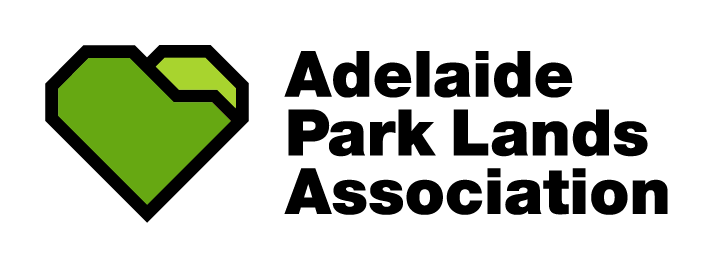by Nicholas Munday, Adelaide Urban Birding
The subject of this article is one of the more cryptic and secretive birds of your Adelaide Park Lands: the Australian (Southern) Boobook. (Ninox boobook)
The smallest of Australia’s owls, it is also the most widespread and the one most likely to be encountered in suburban Adelaide. Like all of Australia’s owls, it is nocturnal and more often heard than seen, recognised by its distinctive, onomatopoeic ‘boo-book’ or ‘more-pork’ contact call.
Owls are birds-of-prey forming the order Strigiformes.
All representatives of that order are characterised by large, forward-facing eyes, rounded heads with comparatively flat faces, feet with sharp talons for killing prey, exceptional hearing, and specialised, rounded wings that allow them to fly in near silence.
The Australian Boobook is no exception, and is a typical representative of the ‘Hawk Owls’ (genus: Ninox) being a genus unique to Australasia, found across Australia, New Guinea, Indonesia, and New Zealand.
A young Australian Boobook displaying some of the traits typical of owls: large eyes, rounded heads, and sharp talons. Photograph: Adelaide Urban Birding.
As predatory birds, Boobooks have a muted colour palette of browns and whites, which help to break-up their profile (particularly during the day, when they risk being mobbed and harassed by other birds).
They also have a habit of roosting either within dense foliage or in dark, sheltered areas such as roof cavities or barns. This means, despite their relative abundance across the Adelaide region, Boobooks are seldom seen. In contrast, the enigmatic ‘Boo-book’ call is a subtle yet omnipresent feature of the suburban soundscape.
Out in the open: a captive Australian Boobook on display at a free-flight bird show. These birds are rarely seen in such exposed locations in natural environments. Photograph: Adelaide Urban Birding.
Of the five species of Ninox owls found across Australia, the Australian Boobok is by far the most common in South Australia. Two other species also persist in the state: the larger Barking Owl (Ninox connivens), which probably had a wider distribution prior to European settlement but can now only be found across the eastern-most parts of the state; and the truly enormous Powerful Owl (Ninox strenua) - Australia’s largest owl species - which can be seen occasionally in the far south-east of the state near Mount Gambier.
For a long time it was considered there was only the one species of Boobook in Australia; however, in recent decades genetic analysis has revealed the Tasmanian Boobook is more closely related to the New Zealand Morepork (Ninox novaeseelandiae), and has been split into its own species Ninox leucopsis. To add to the confusion, the Tasmanian Boobook will also migrate to the Australian mainland over winter, having been recorded in Victoria and New South Wales (but not yet confirmed in South Australia).
There is another owl species also found in the Adelaide region, but from a different family altogether: the Eastern Barn Owl (Tyto javanica). These birds are unmistakable, with mottled fawn-coloured backs, silvery wings, and stark white heads framed by a heart-shaped facial disk. Barn Owls are most frequently seen out on the northern Adelaide plains, being particularly adept hunters of rodents: the name ‘barn owl’ refers to their strong association with farm buildings where they will frequently roost and hunt. Vocally, however, they are considerably less tuneful than Boobooks; Barn Owls screech and rasp rather than call mournfully like the Boobook.
An Eastern Barn Owl, seen in northern South Australia. These birds can also be encountered in suburban Adelaide, but less frequently than the Australian Boobook. Photograph: Adelaide Urban Birding.
Owls generally are top-order predators, and like many birds of prey, have found themselves in strife as a result of the bioaccumulation of toxic chemicals through the food chain.
Owls are particularly susceptible to secondary poisoning from many common rodenticides, which is a considerable problem for a bird with a diet predominantly comprising small mammals.
Ironically, in our attempts to rid ourselves of rodent pests through chemical means, we inadvertently remove their natural predators from the ecosystem. Unfortunately, the regulation of rodenticides in Australia has largely failed to take into account these potential risks to the ecosystem, and retailers often supply poisons that are known to present a risk to birds-of-prey.
Despite these risks, the Australian Boobook has persisted in cities, probably due to its varied diet, which includes insects and spiders in addition to small mammals.
The Australian Boobook likely has a broad distribution across your Adelaide Park Lands. While always cryptic, good places to encounter them potentially include Possum Park / Pirltawardli, Botanic Park and the Adelaide Botanic Garden (Park 11) (where at least one bird used to roost regularly near the Bicentennial Conservatory), and Veale Park / Walyu Yarta (Park 21).
An Australian Boobook in Victoria Park / Pakapakanthi (Park 16). Pic @gus_thompson / iNaturalist
There is an iNaturalist page where citizen scientists (like you) have recorded sightings of Australian Boobooks in your Adelaide Park Lands and elsewhere: https://www.inaturalist.org/taxa/979816-Ninox-boobook
An Australian boobook sleeping during the day in Victoria Square / Tarntanyangga! Pic: @samzhang / iNaturalist
***
To find out about other birds in your Adelaide Park Lands, check out our What Bird is That? series.
Cover (top) photo: Australian Boobook in the Adelaide Botanic Garden by Nicholas Munday, Adelaide Urban Birding
Nicholas Munday is an Environment and Planning Lawyer with degrees in Law and Science (Evolutionary Biology and Ecology) from the University of Adelaide. He has a strong interest in biodiversity conservation and runs the ‘Adelaide Urban Birding’ Instagram (@adelaideurbanbirding) account dedicated to his photography of native birds in the Adelaide Metropolitan area.
In his free time, Nicholas is well-known in the Adelaide choral music and theatre communities, and also enjoys bushwalking, writing, and (of course) photography.
The opinions expressed in this article are entirely those of the author. This author is not affiliated with the Adelaide Park Lands Association Inc.









